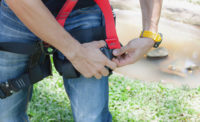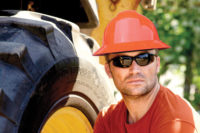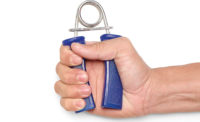Arming your employees with knowledge and addressing their misconceptions about heat exposure is one way to get them to listen and take action.
Misconceptions
A body is made to handle the heat
A body will signal when fluid is needed
Clothing protects a body against heat
Misconception: A body is made to handle the heat
Many employees may think “if I sweat, I won’t overheat,” which is not true due to the impact environmental conditions can have on a body.
For a body to function normally, the core temperature must be maintained within the range of 96.8˚ to 100.4˚F, according to researchers for the National Institute for Occupational Safety and Health (NIOSH). To accomplish this, a body automatically varies the rate and amount of blood circulation through the skin to facilitate an exchange of heat with the environment. Depending on the environmental conditions in which an employee is working (e.g., dry, humid, direct or indirect heat), various factors may add stress to the body and lead to heat-induced illnesses, disorders and accidents.
Nature of the body
If environmental temperatures rise and/or heat produced by the body increases due to the work or activity being performed, the body automatically sweats to get rid of the excess heat. However, sweat does not cool the body unless moisture is removed from the skin by evaporation. Air temperature and humidity; skin temperature; air velocity; evaporation rate; radiant temperature; and type, amount and characteristics of clothing worn all affect the rate of heat exchange with the environment.
Again, this is where a misconception may exist. Employees may think that as long as their bodies sweat, they are protected from overheating. They may not realize that under certain conditions, such as high humidity, the evaporation of sweat from the skin is decreased and the body’s efforts to maintain an acceptable body temperature may be significantly impaired. If this occurs, employees not only are at greater risk for heat-induced illnesses, but also strength, alertness and mental capacity may be affected because less blood goes to the active muscles, brain and other internal organs. Employees who perform delicate or detailed work may find their accuracy suffering, and others may find their comprehension and retention of information lower, putting them at risk for accidents.
But there is another risk to consider as well — dehydration.
Misconception: A body will signal when fluid is needed
If heat loss is not adequate, the brain will continue to signal the sweat glands in the skin to shed larger quantities of sweat onto the skin’s surface. Many employees may think “when I’m thirsty, I need water,” which is not true because dehydration can occur when the amount of water leaving the body is greater than the amount being taken in.
According to NIOSH, most workers exposed to hot conditions drink fewer fluids than necessary because of a lack of thirst. Since it is essential to take in as much water as the sweat being produced — which can be as much as 2 to 3 gallons — the amount and timing of fluid consumption should not be dependent on thirst. It is recommended that in the course of a day’s work in the heat, workers should drink 5 to 7 ounces of fluids every 15 to 20 minutes to replenish the necessary fluids in the body.
Employers must do their part as well. Providing employees with potable drinking water — water that meets the quality standards prescribed in the U.S. Public Health Service Drinking Water Standards — is a requirement under OSHA’s 1910.141, Sanitation standard, whether it’s through plumbed facilities or water dispensers. If the latter method is used, OSHA requires the dispenser be designed, constructed and serviced so that sanitary conditions are maintained, be capable of being closed, and be equipped with a tap. Open containers such as barrels, pails or tanks for drinking water from which the water must be dipped or poured are prohibited, as is a common drinking cup or other common utensils.
Misconception: Clothing protects a body against heat
It’s true that clothing is a barrier between the skin and the environment. But clothing can also prevent the exchange of heat, exposing employees to the risk of heat-related injuries and illnesses. Consider the type, amount and characteristics of the clothing being worn in determining the risk of heat stress.
Research shows that, in general, the thicker the clothing, whether it is due to layering and/or air and vapor impermeability, the greater the interference with heat exchange. In other words, each added layer of clothing, if not compressed by pressure from other clothing, will increase the total insulation factor affecting the body’s ability to exchange heat with the environment. On the flipside, differences in fibers or fabric weave — unless these directly affect the thickness or the vapor or air permeability of the fabric — have only minor effects on insulation.
The proper type of clothing should be selected based on the specific circumstances employees face in the work environment. If the work environment requires insulated gloves, insulated suits, reflective clothing, infrared reflecting face shields or another type of personal protective equipment, evaluating the conditions and taking the necessary steps to protect employees from heat stress is critical. Keep in mind that thermally conditioned clothing, self-contained air conditioners in backpacks, and engineering controls are just a few options available.



